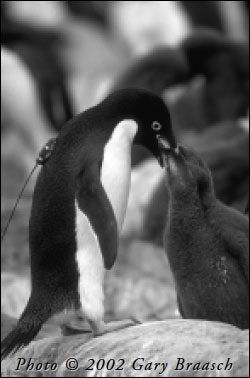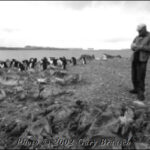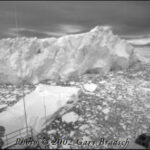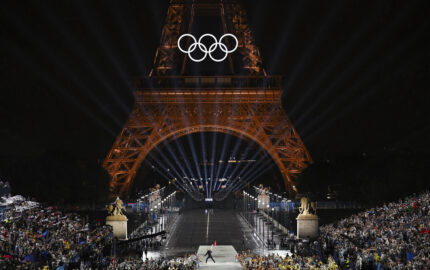
Reporting on the INS
Journalists who devote considerable time to coverage of immigration and investigation of the Immigration and Naturalization Service (INS) write about why they report on a topic that rarely makes Page One. They also share experiences in how they’ve reported these stories, especially in the wake of the terrorist attacks. Arguably, this is one of the more difficult beats given the secrecy with which the INS guards much of what it does—a secrecy that some news organizations are now challenging on constitutional grounds. – Melissa Ludtke, Editor
RELATED ARTICLE
"Using a Camera to Document Global Warming"
- Gary BraaschFrom the bridge of the National Science Foundation research icebreaker Nathaniel B. Palmer, the scene is breathtaking, even mystical. Four searchlight beams arrow down from above me to a vanishing point over dark water. Sea smoke sweeps in along the beams and occasionally an iceberg is illuminated. We are approaching the Antarctic Circle along the west side of the Antarctic Peninsula.
This is my first trip to this southern continent, for which I have waited 40 years since I first read about it as a kid. I’ve come now because in those years the average temperature along the Peninsula has risen about 2.5 degrees C (~5 degrees F), by actual measurement at British science stations. The Antarctic Peninsula, which stretches 900 miles north toward South America, has a more moderate climate than the rest of the continent. Its great seasonal changes provide many benchmarks against which to measure climate shifts. Scientists are studying the effect on ice shelves, penguins, tiny plants, and the all-important plankton and krill of the Southern Ocean.
On my 1999 journey south, I accompanied Hamilton College geologist Eugene Domack to the disintegrating Müller Ice Shelf—a scene that was repeated in much larger scale in 2002 when a huge part of the Larsen Ice Shelf broke apart. This part is thought to have been intact since the end of the last ice age 10,000 to 12,000 years ago.
In papers by Domack and others, the recent regional warming is viewed as unusually rapid, though it is not the only time warmth has diminished these ice shelves. A concern of scientists is that continued warming and ice shelf destruction will lead to increased flow and melting of tidewater glaciers and continental ice streams. Unlike the melting of ice shelves that are already floating, this will add to sea level rise. My images help us visualize the scale of these events and provide a sense of proportionality to the amount of ice involved in even a tiny section of a small ice sheet in the vastness of Antarctica.
For Adelie penguins, the effect of warming is due to a changing relationship between the winter sea ice, the preferred rookery sites on rocky points that melt free in summer, and the krill on which they feed. Montana State University professor and ornithologist Bill Fraser has studied the Adelies near the United States Palmer Station for more than 25 years. He has seen some rookeries diminish to forlorn pebbly flats while others continue to teem. Penguins seek dry nesting sites within a short foraging range of the edge of the pack ice, beneath which the shrimp-like krill are found. Warming winter temperatures along the Peninsula reduces the pack ice, which then melts farther out in summer, too far from some rookeries. Also, according to Fraser’s correlations, the warming air combined with more open water leads to increased snowfall on some nesting sites, causing breeding failure. Adelies, numbering in the millions, are not endangered as a species, but they are sensitive monitors of climate changes as their population decreases in Fraser’s study area, but increases farther south.






